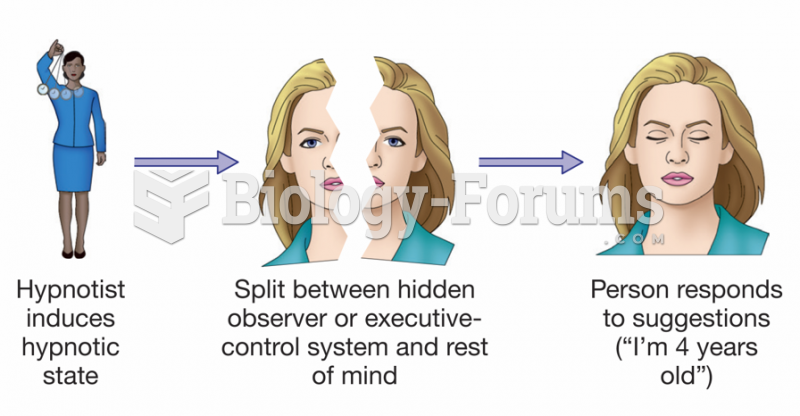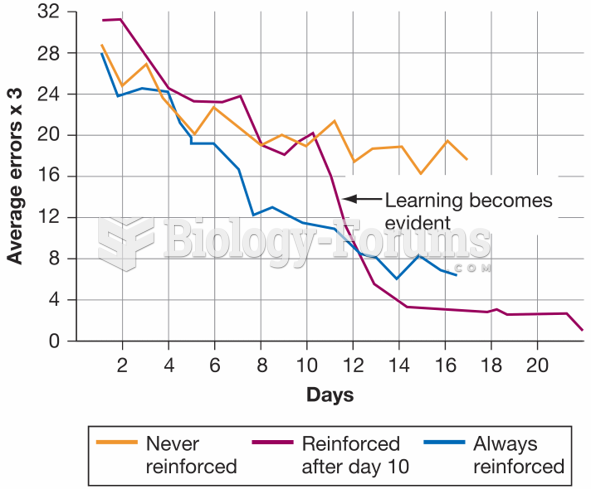Answer to Question 1
The first behavioral explanation for phobias was supplied by Watson and emphasized classical conditioning. If a formerly neutral (conditioned) stimulus is paired with a conditioned stimulus that elicits fear, the conditioned stimulus will, in time, have the capacity to elicit fear itself. As in the Watson's Little Albert experiment, the sight of white fur was paired with a loud noise and came to produce crying on its own. Research has found that emotional distress can be conditioned in this way. Furthermore, increasing evidence indicates that emotional reactions can be conditioned through enhanced activation of the fear network involving the amygdala and the medial frontal cortex. However, conditioning can be limited by preparednessthe fact that some stimulus associations are more easily made than others. Therefore, biological predisposition may make the development of some phobias (machinery, for instance) less likely than others (small animals).
Observational learning agrees with the conditioning approach that phobias stem from experiences in the world and stimulus-response connections. However, observational learning argues that fears can be learned through indirect rather than direct conditioning. Experimental research suggests that fears can be learned this way, and neuroimaging research indicates an activation of the amygdala when participants observed a fear conditioning experiment.
An even more indirect way of developing phobias is to have a fear-inducing way of thinking. Some researchers argue that people with phobias have negative thoughts and develop fears when they listen to themselves. Fears are dramatically reduced when such negative thoughts are challenged and removed.
It is possible that these three factors interact to explain many phobias. Whether by direct or indirect conditioning, people develop a fear response to specific stimuli. Those who are most vulnerable to such conditioning may have a predisposing tendency to think fearful and negative thoughts. Alternatively, once they have experienced a conditioning episode, those who adopt such negative thoughts make themselves more fearful and responsive to any further conditioning experiences.
Answer to Question 2
The three different phobic disorders are specific phobia, social anxiety disorder, and agoraphobia.
Specific phobia
is the unrealistic and excessive fear of a specific animal, object, or situation. Common examples include fear of needles, flying, elevators, bugs, dentists, and snakes. An individual with a specific phobia experiences anticipatory anxiety when aware of an impending situation that may force a confrontation with the feared object. When the individual is actually exposed to the feared object, there is almost always an intense and immediate anxiety response.
Social anxiety disorder
is persistent fear of being in a social situation in which one is exposed to scrutiny by others and a related fear of acting in a way that will be humiliating or embarrassing or where social disapproval may occur. Examples of social phobias include irrational reactions to eating in public places, using public restrooms, public speaking, or attending social gatherings. Like the specific phobic, the social anxiety disorder is characterized by marked anxiety when anticipating the phobic situation and thus usually avoids such situations that interfere with his or her daily functioning.
Agoraphobia
is a marked fear of being alone or of being in public places where escape is difficult or where help is not readily available in the event of a panic attack. Often individuals with agoraphobia experience intense fear in shopping malls, in crowds, or in tunnels, bridges, or public vehicles. The primary characteristic of agoraphobia is severe phobic anxiety and phobic avoidance of the feared situation. Many agoraphobic individuals are housebound as a result of their avoidance and only venture forth when accompanied by a close and trusted companion.
Behavioral theories may be used to explain the acquisition and maintenance of phobic behaviors. Specifically, classical conditioning may explain the acquisition of phobias through association. Observational learning theory also may explain the development of phobic behavior through exposure to the fear responses exhibited by others. According to the negative information perspective, fears are acquired from sources such as the media that present negative information about objects, situations, or groups, suggesting that they should be feared. The cognitive-behavioral perspective attributes fears to cognitive distortions and catastrophic thinking.







